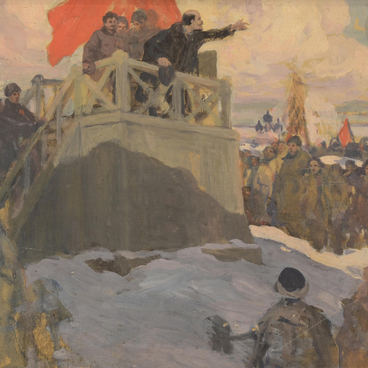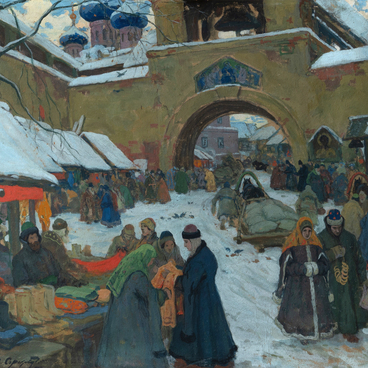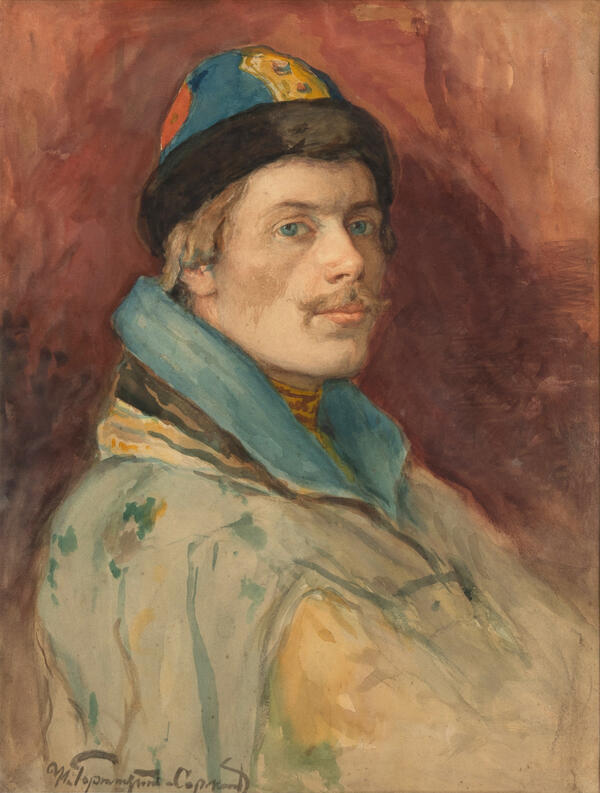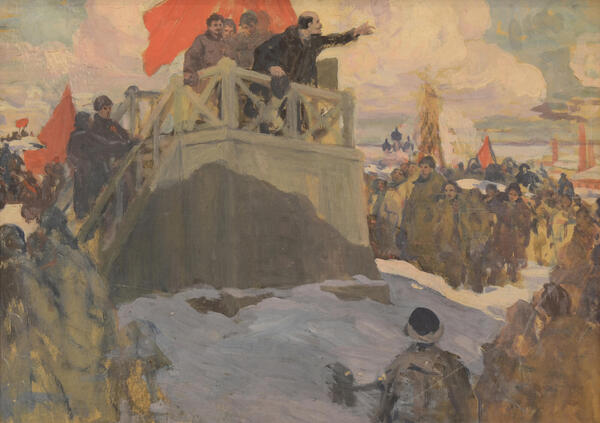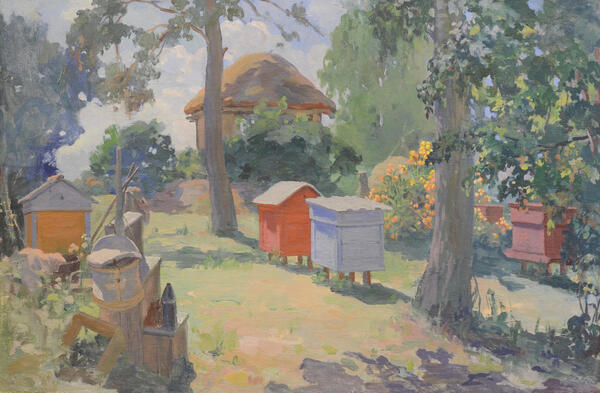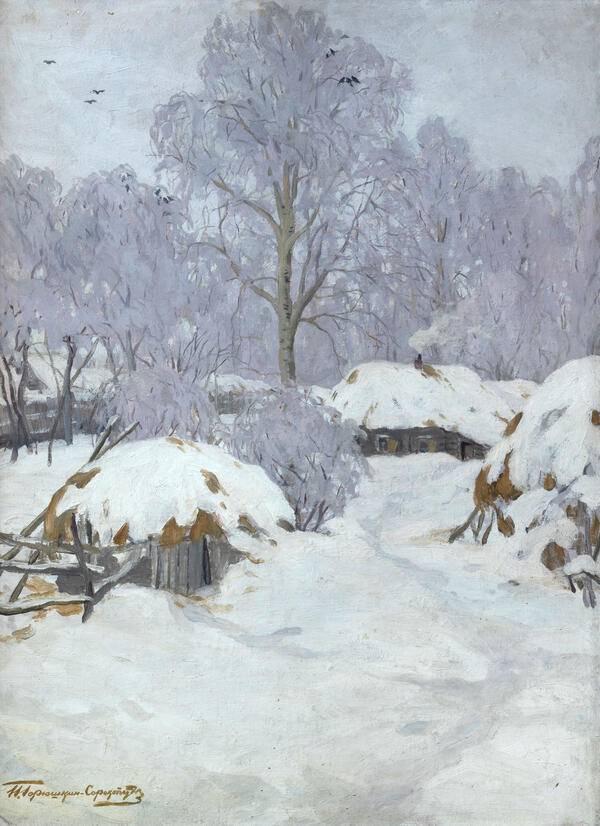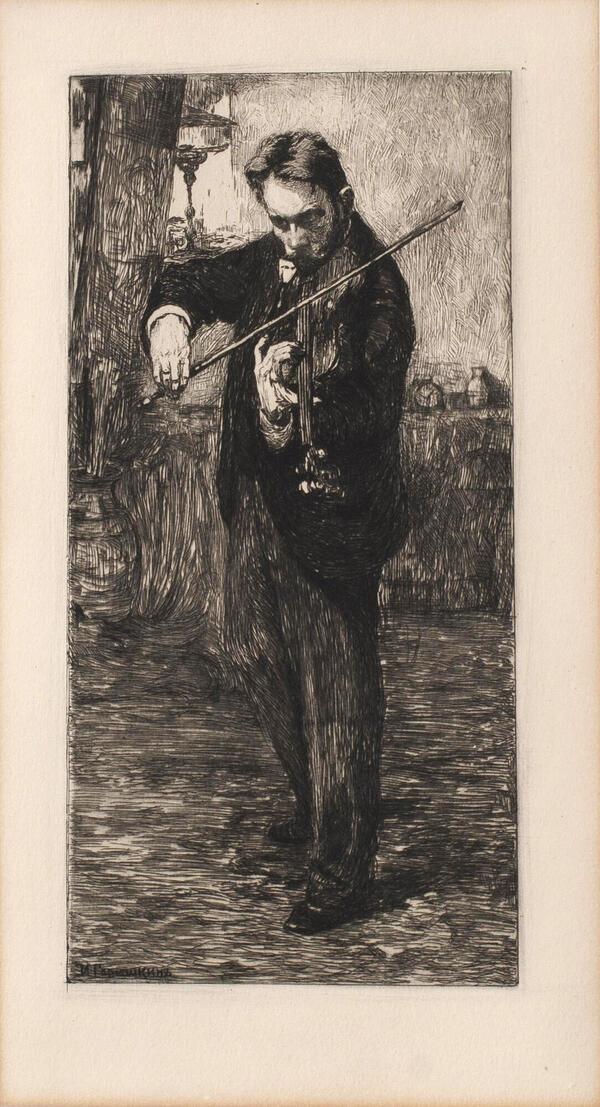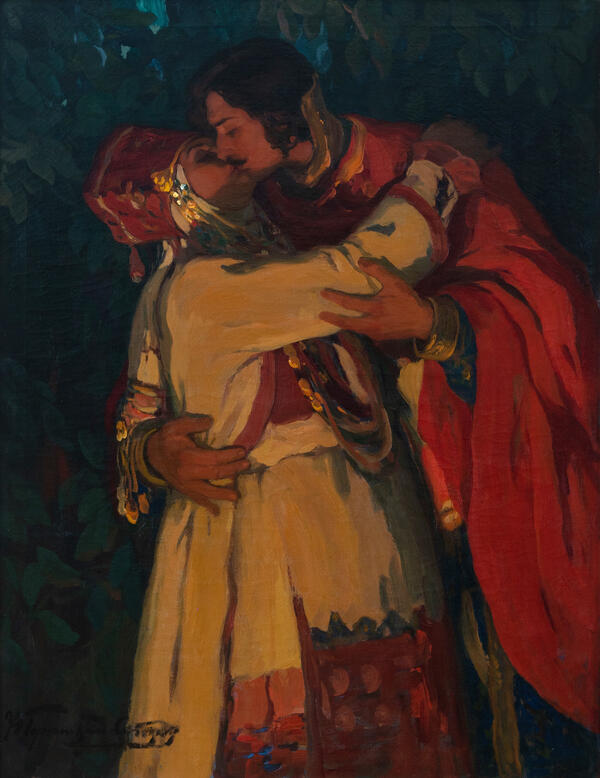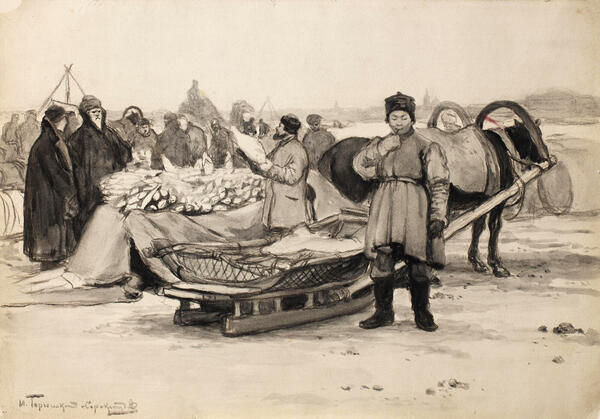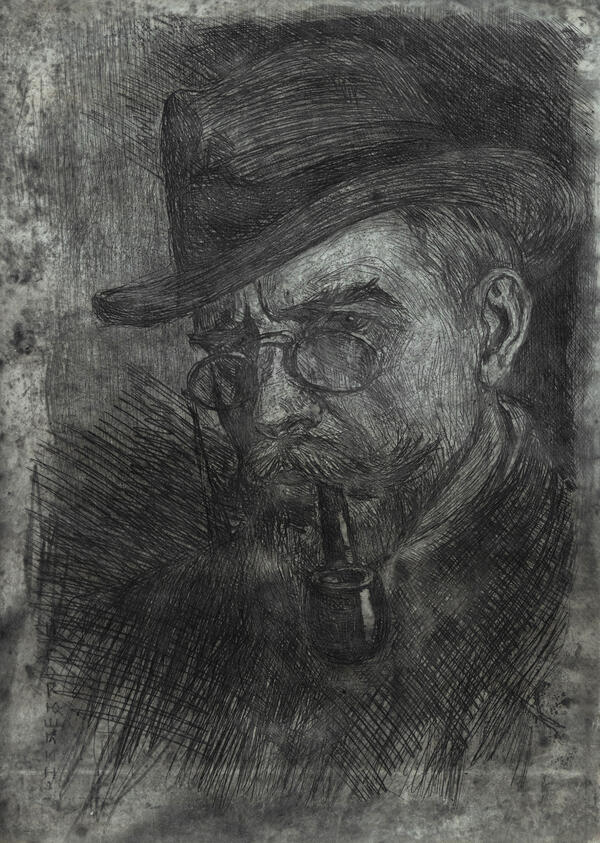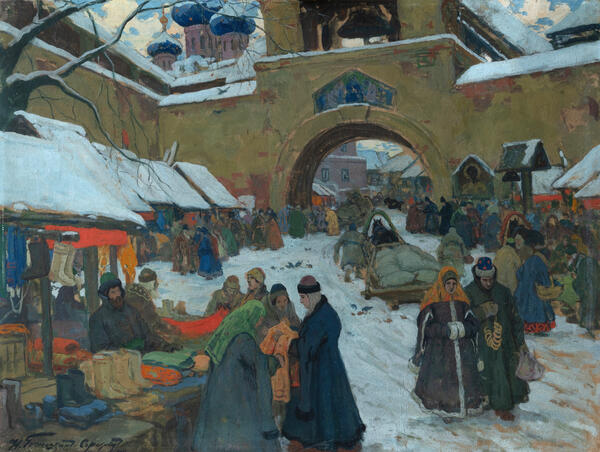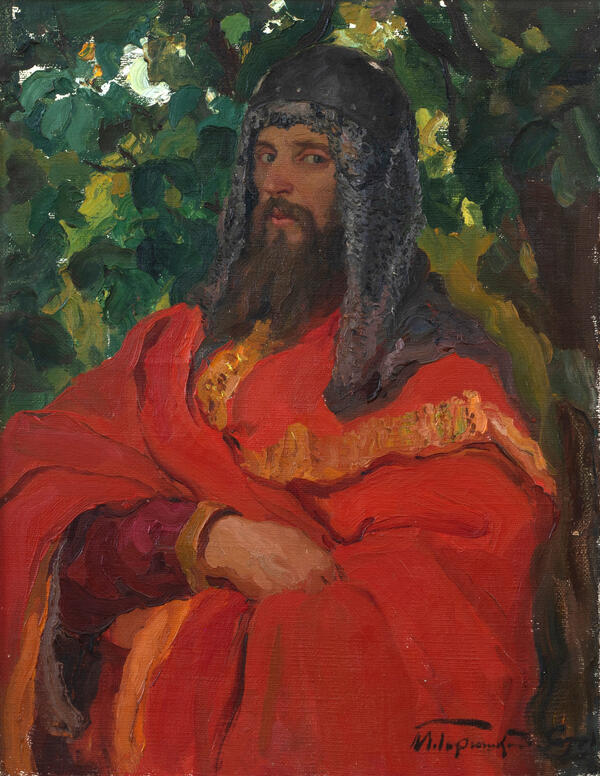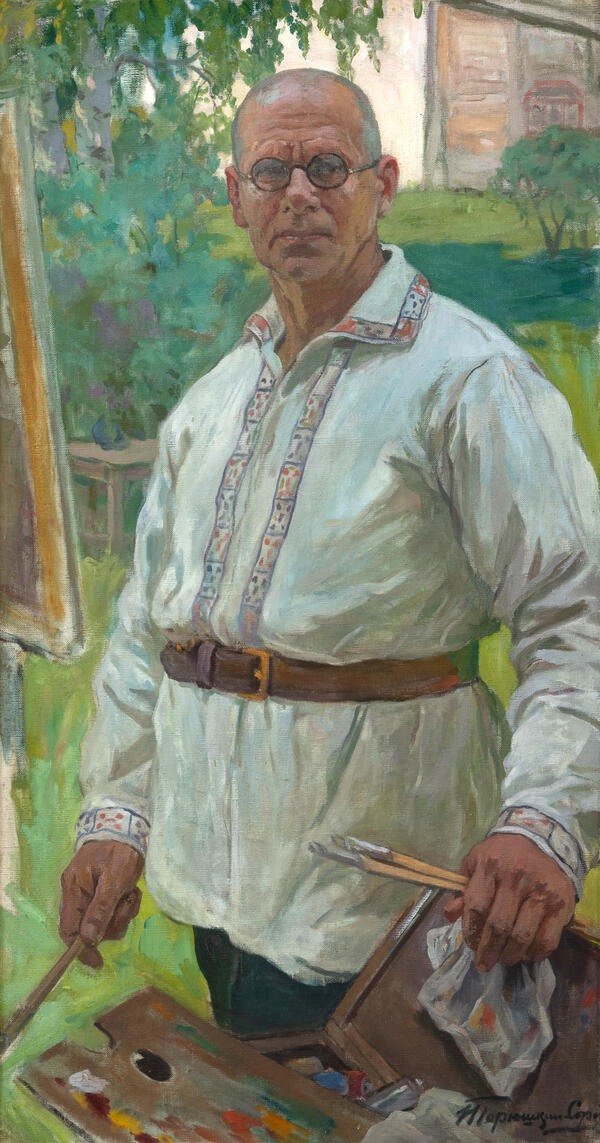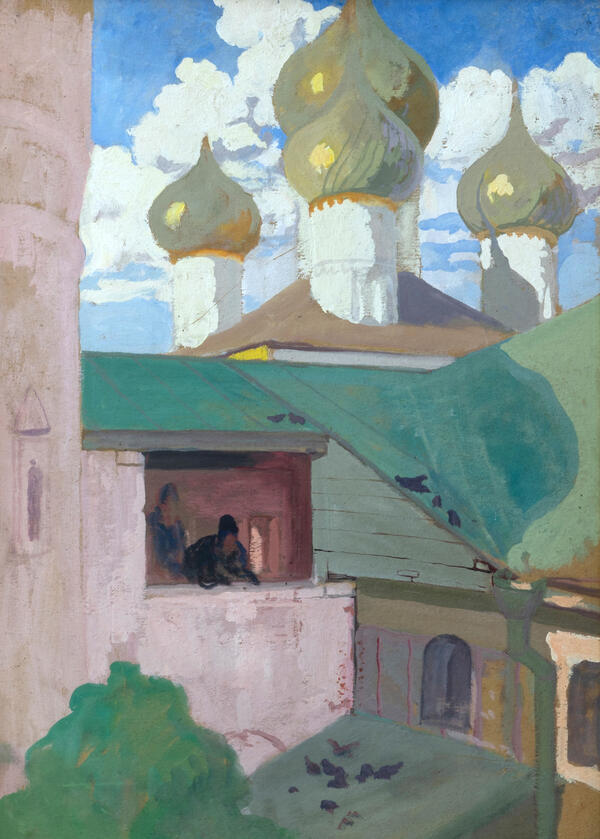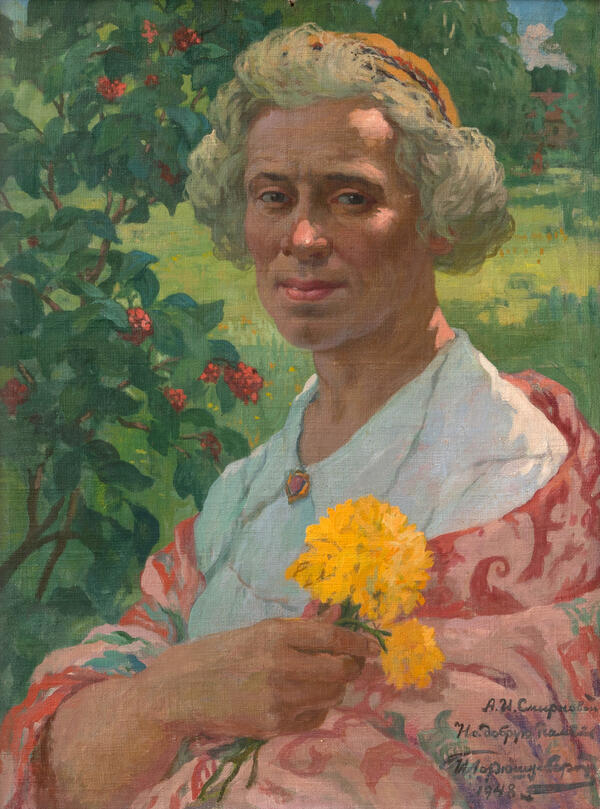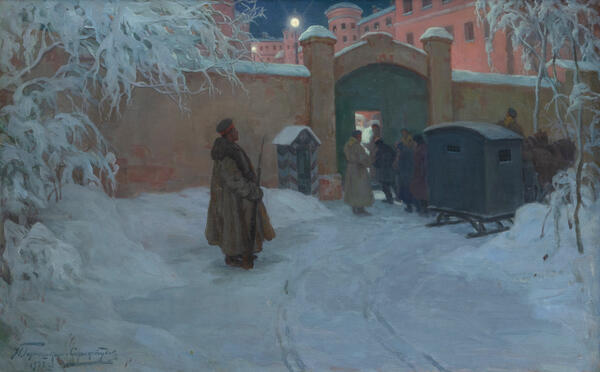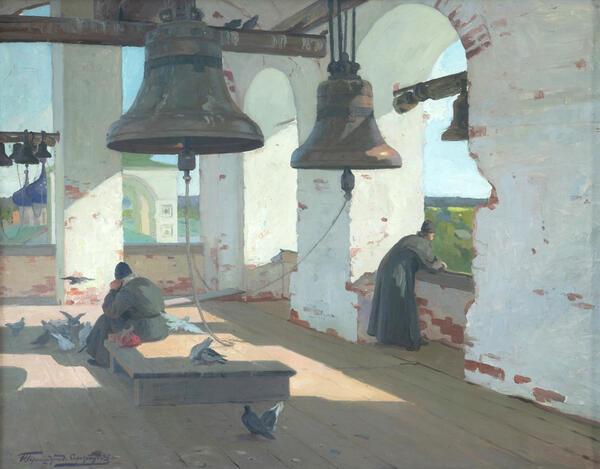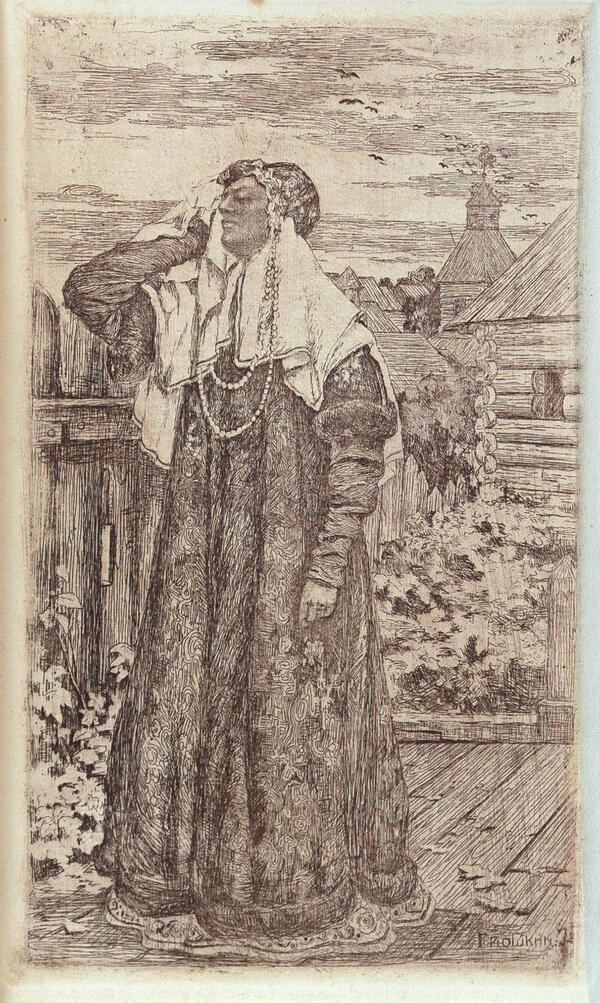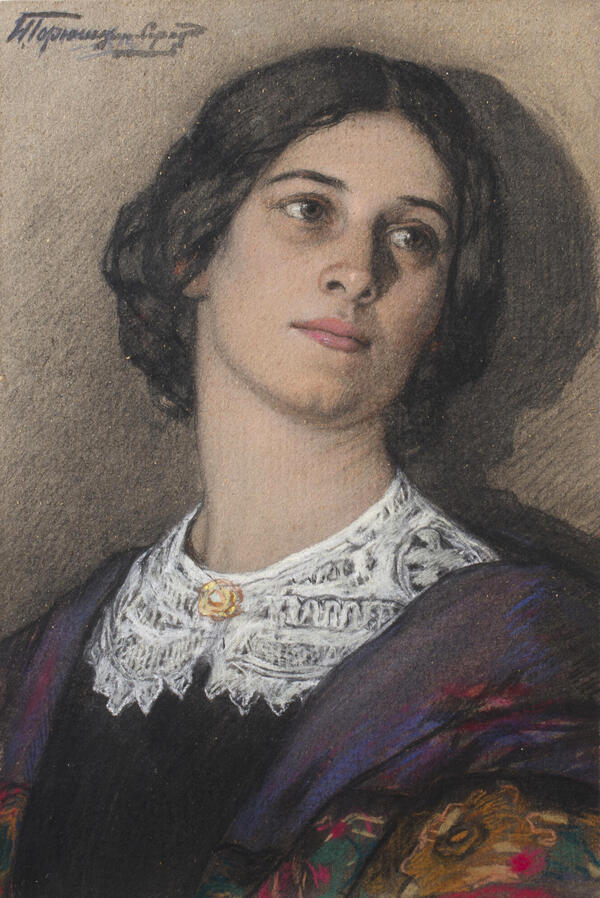It is no wonder that Ivan Silych Goryushkin-Sorokopudov was interested in Russian history. Like many other painters, such as Andrey Petrovich Ryabushkin, Boris Mikhailovich Kustodiev, Ivan Yakovlevich Bilibin, and Nicholas Konstantinovich Roerich, he sought to convey the spiritual strength and beauty of the Russian people through his work. By celebrating old Russia, with its customs and traditions, Ivan Goryushkin-Sorokopudov contributed to the growth of interest in Russian history and culture.
After graduating from the Imperial Academy of Arts, Ivan Goryushkin-Sorokopudov traveled extensively throughout old Russian cities. During these trips, he collected materials for his paintings. The wealth of colors, old patriarchal way of life, and vibrancy of Russian culture always inspired the artist during these journeys.
After moving to Penza in 1908, Ivan Goryushkin-Sorokopudov began visiting local villages and small towns, carefully observing the lives of the people. He studied traditional costumes and household items. It was in Penza that he created his most prominent historical paintings. Most of all, he was interested in the 17th century. Penza, founded during that period, had retained some traces of those times. In his new city, Ivan Goryushkin-Sorokopudov observed the daily lives of his contemporaries. He pondered on how to portray different aspects of the lives of people of the past, with their traditions and everyday activities.
The painting “The Judgment of God” tells a story. Its title reflects a form of justice that was actively used in ancient Russia. Sometimes a trial could be organized in the form of a duel between the disputing parties. It was believed that the higher powers would ensure the victory of the right and the defeat of the liar or the criminal. This is exactly the story Ivan Goryushkin-Sorokopudov strove to tell the viewer.
The artist depicted the bystanders eager to witness the duel. Some of them even got to the rooftops of houses. The tsar sits on a red cloth covered platform surrounded by boyars and streltsy. A sexton in a green kaftan reads the decree. A gray-bearded warrior has arrived at the arena. The piebald horse has lowered its snow-white mane. A tall man wearing an open chainmail shirt rushes into battle impatiently. In a moment, the judgment of God would be fulfilled. Its outcome is difficult to predict. Ivan Goryushkin-Sorokopudov left this dramatic scene with an open end.
